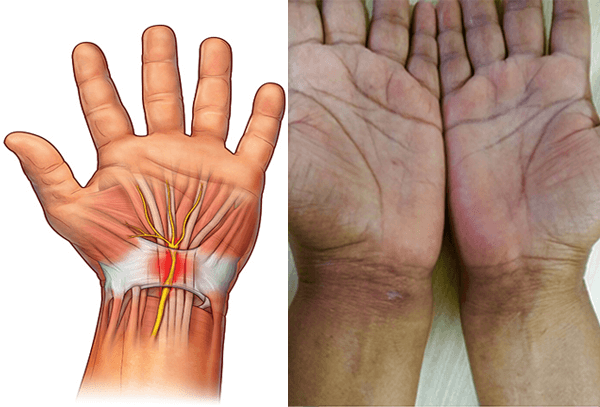At Dr. Tayyab saleem malik clinic (Cosmetic Enclave)
Carpal tunnel release is a surgical procedure performed to relieve the symptoms of carpal tunnel syndrome. Carpal tunnel syndrome occurs when the median nerve, which runs from the forearm to the hand, becomes compressed or irritated as it passes through the carpal tunnel—a narrow passageway in the wrist.
During carpal tunnel release surgery, the surgeon makes an incision in the palm or wrist and accesses the carpal tunnel. The transverse carpal ligament, which forms the roof of the tunnel, is then carefully divided or released to create more space for the median nerve. This relieves the pressure on the nerve and reduces the symptoms associated with carpal tunnel syndrome, such as pain, numbness, tingling, and weakness in the hand and fingers.
There are two main techniques for carpal tunnel release:
- Open carpal tunnel release: In this traditional approach, a larger incision is made in the palm or wrist, allowing direct access to the carpal tunnel. The surgeon visualizes the transverse carpal ligament and divides it to release pressure on the median nerve.
- Endoscopic carpal tunnel release: This technique involves the use of a small, flexible tube with a camera attached (endoscope) to guide the surgeon through a smaller incision. The transverse carpal ligament is visualized using the endoscope, and it is then cut or released using specialized instruments.
Both techniques aim to achieve the same goal of relieving pressure on the median nerve, but the choice of technique may depend on various factors, including the surgeon’s expertise and the patient’s specific needs.
After the procedure, the incision is typically closed with sutures or staples, and a dressing or bandage is applied. Recovery time can vary, but most individuals can resume light activities within a few days to weeks. Physical therapy exercises and techniques may be recommended to help restore strength and flexibility to the hand and wrist.
Carpal tunnel release surgery is generally considered safe and effective, with a high success rate in relieving symptoms. However, as with any surgical procedure, there are risks involved, including infection, bleeding, nerve damage, or recurrence of symptoms.
If you are experiencing persistent or severe symptoms of carpal tunnel syndrome that do not respond to conservative treatments, it is important to consult with a healthcare professional specializing in hand and upper extremity conditions. They can evaluate your condition, perform diagnostic tests, and discuss the potential benefits and risks of carpal tunnel release surgery in your specific case.

